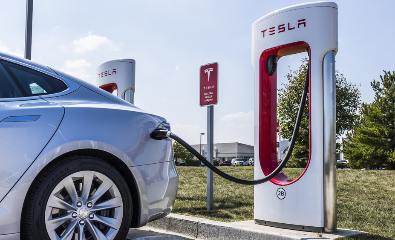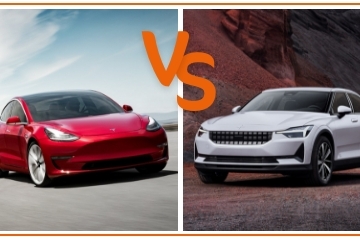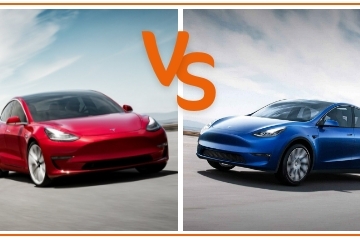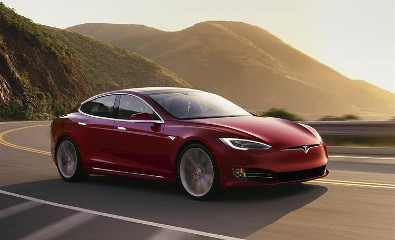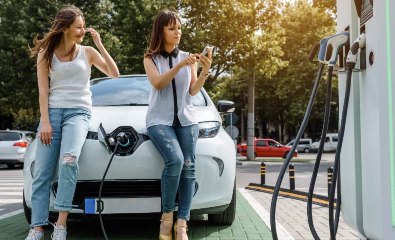Why Lease A Tesla?
Tesla is an American carmaker that was launched by the one-man PR machine that is Elon Musk less than 20 years ago. It’s arguably the most famous name in the world of electric cars and the company has blazed a trail that for years the world’s more recognised automotive manufacturers didn’t dare to head down.
Tesla’s 4 current models available to lease – the Model S, Model 3, Model X and Model Y – are some of the most sought-after EVs in the world.
Who Is Tesla?
So meteoric has been the firm’s rise, by the end of 2020 Tesla’s market value was worth more than the next 9 biggest carmakers on the planet combined! Yes, you read that right: if the world’s investors have got it correct, the upstart Tesla brand is now so powerful that its value is more than 10 times greater than heavyweight companies like Ford, General Motors and Volkswagen.
And all that value has been generated by one thing: Elon Musk’s single-minded focus on bringing electrification to the world. Today, Tesla is by far the number 1 most recognised brand in the world of electrification and across the globe a growing band of disciples are preaching the company’s gospel – namely that the best electric cars in the world have a Tesla badge on the nose.
Model S
The Model S, launched in 2012, was a revelation. It was beautiful to look at, with flowing curves and head-turning stance, and it boasted incomparable driver technologies, including a huge touchscreen interface that looked like it had been invented by Apple.
Prior to the Model S’s arrival, the thought of any electric vehicle being able to go up to 300 miles between charges was simply unheard of. The Model S, a Porsche Panamera-sized 5-door Gran Turismo-style executive luxury model, also pioneered all kinds of camera safety kit that hadn’t been seen before in any automotive segment.
Tesla Model X
Tesla’s luxury vehicle is the Model X, a large SUV that launched in 2015 with trendy ‘Falcon Wing’ doors and the ability to seat up to 7. There are 2 Model X variants, both with a 100kWh battery pack. In the regular derivative, you get a 348-mile WLTP driving range and a huge 670hp, allowing for a 3.8-second 0-62mph time. Not fast enough for you? Then try the demented ‘Plaid’ version, named after a scene in 1980s spoof sci-fi film Spaceballs, of which Musk is a huge fan. The Plaid has a colossal outputs of 1020hp, which lets it run 0-62mph in around 2.5 seconds – that’s hypercar performance. Nevertheless, it’ll still do up to 333 miles on a single charge.
Tesla Model 3
The most popular Tesla is the Model 3 – the car that opened up the possibility of electric driving to an even wider audience. This midsized 4-door family saloon offers all the technical prowess of the larger Tesla models – including stunning performance and outstanding range – but at a significantly lower price entry point. Which is why, in 2021, it was the 2nd best-selling car of all in the UK, only beaten by the ubiquitous Vauxhall Corsa.
Launched in 2017 but not arriving in the UK until 2019, the Model 3 has quickly become the world’s most popular electric car, topping the charts globally in 2018, 2019 and 2020. There are 3 variants, starting with the ‘Standard Range Plus’ version, which has a 278-mile WLTP range. The other 2 versions get Dual Motor All-Wheel Drive. Next up is the ‘Long Range AWD’ derivative, which offers a 360-mile range. At the top of the line-up, there’s the Model 3 Performance variant, which offers a 352-mile range.
Tesla Model Y
The Model Y arrived in 2022 in the UK. This scaled-down version of the Model X is built on the same platform as the larger model, while offering a similar cabin and dashboard layout to the Model 3. This compact SUV still offers an optional 3rd row of seating for the ability to carry 7 passengers when necessary.
More Than 700 Tesla Superchargers
There are now 780 Tesla Superchargers situated across the UK alone, all of which allow Tesla drivers – and only Tesla drivers – to enjoy rapid charging on major UK motorways and other trunk roads. However, there is talk that Tesla will soon open its Supercharger network to other makes of electric cars, which is nice of Elon, isn’t it?
Anyway, the Supercharger is, as its name suggests, ultra-rapid charging. Never one to settle for ‘good enough’, Tesla’s ultra-rapid DC units operate mainly from 120- to 150kW – significantly higher than standard 50-100kW chargers at many stations – meaning you’ll spend less time charging and more time on the road, but if you’re lucky enough you might find a V3 charger which will operate at a blistering 250kW maximum. And that will see charging times considerably reduced again.
Why Lease A Tesla With Vanarama?
Tesla’s premium features and performance naturally comes with a higher price tag. However, leasing a Tesla with Vanarama makes getting behind the wheel of these industry-leading electric vehicles even more affordable.
You’ll pay an initial payment at the start of your lease deal, followed by regular monthly payments. You decide how long you’d like your contract to be, so you can upgrade your car as often as you like.
At the end of your deal, return your Tesla to us. With no need to find a buyer, you’re free to start looking for your next electric vehicle to lease. It’s as simple as that!
If you need any further information on electric cars, take a look at our handy guides.
With Tesla producing some of the latest and most advanced electric vehicles, our team is on-hand to answer any questions you may have. Give us a call if you need any help choosing your perfect Tesla lease deal.










